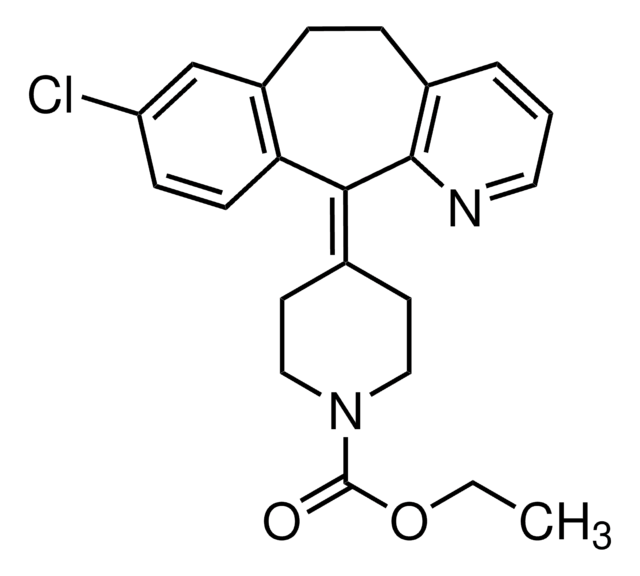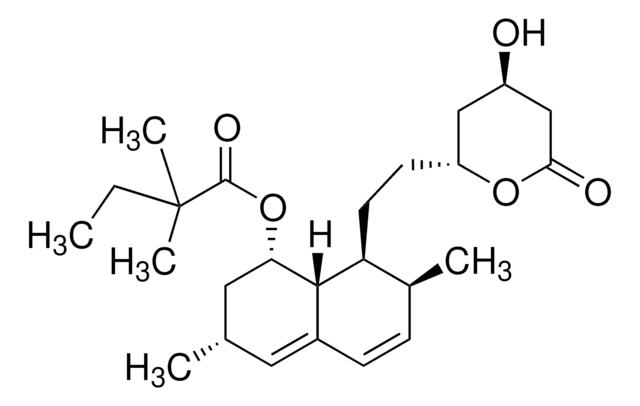T4951
2-((3-Trifluoromethyl)phenyl)histamine dimaleate
≥98% (HPLC), powder
Sinônimo(s):
(2-[2-(3-Trifluoromethyl)phenyl)-1H-imidazol-4-yl]ethanamine dimaleate, Compound 39
About This Item
Produtos recomendados
Nível de qualidade
Ensaio
≥98% (HPLC)
Formulário
powder
cor
off-white
solubilidade
H2O: ~20 mg/mL
temperatura de armazenamento
2-8°C
cadeia de caracteres SMILES
OC(=O)\C=C/C(O)=O.OC(=O)\C=C/C(O)=O.NCCc1c[nH]c(n1)-c2cccc(c2)C(F)(F)F
InChI
1S/C12H12F3N3.2C4H4O4/c13-12(14,15)9-3-1-2-8(6-9)11-17-7-10(18-11)4-5-16;2*5-3(6)1-2-4(7)8/h1-3,6-7H,4-5,16H2,(H,17,18);2*1-2H,(H,5,6)(H,7,8)/b;2*2-1-
chave InChI
GGDUVPKRZGATLR-SPIKMXEPSA-N
Aplicação
Ações bioquímicas/fisiológicas
Características e benefícios
Nota de preparo
Palavra indicadora
Danger
Frases de perigo
Declarações de precaução
Classificações de perigo
Acute Tox. 3 Oral - Eye Dam. 1 - Skin Irrit. 2 - STOT SE 3
Órgãos-alvo
Respiratory system
Código de classe de armazenamento
6.1C - Combustible acute toxic Cat.3 / toxic compounds or compounds which causing chronic effects
Classe de risco de água (WGK)
WGK 3
Ponto de fulgor (°F)
Not applicable
Ponto de fulgor (°C)
Not applicable
Equipamento de proteção individual
Eyeshields, Faceshields, Gloves, type P2 (EN 143) respirator cartridges
Escolha uma das versões mais recentes:
Certificados de análise (COA)
Não está vendo a versão correta?
Se precisar de uma versão específica, você pode procurar um certificado específico pelo número do lote ou da remessa.
Já possui este produto?
Encontre a documentação dos produtos que você adquiriu recentemente na biblioteca de documentos.
Nossa equipe de cientistas tem experiência em todas as áreas de pesquisa, incluindo Life Sciences, ciência de materiais, síntese química, cromatografia, química analítica e muitas outras.
Entre em contato com a assistência técnica









